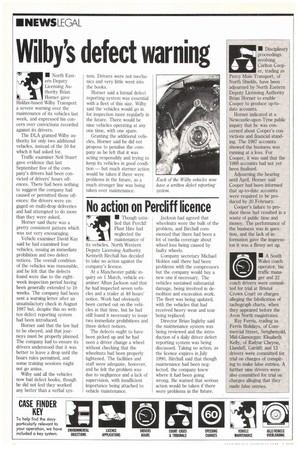Wilby's defect warning
Page 22

If you've noticed an error in this article please click here to report it so we can fix it.
• North Eastern Deputy Licensing Authority Brian Horner gave Halifax-based Wilby Transport a severe warning over the maintenance of its vehicles last week, and expressed his concern over convictions recorded against its drivers.
The DLA granted Wilby authority for only two additional vehicles, instead of the 10 for which it had asked for.
Traffic examiner Neil Stuart gave evidence that last September five of the company's drivers had been convicted of drivers' hours offences. There had been nothing to suggest the company had caused or permitted those offences: the drivers were engaged on multi-drop deliveries and had attempted to do more than they were asked.
Homer said there was a pretty consistent pattern which was not very encouraging.
Vehicle examiner David Kay said he had examined four vehicles, issuing an immediate prohibition and two defect notices. The overall condition of the vehicles was reasonable, and he felt that the defects found were due to the eightweek inspection period having been generally extended to 10 weeks. The company had been sent a warning letter after an unsatisfactory check in August 1987 but, despite this no written defect reporting system had been introduced.
Horner said that the law had to be obeyed, and that journeys must be properly planned. The company had to ensure its drivers understood that it was better to leave a drop until the hours rules permitted, and some training sessions might not go amiss.
Wilby said all the vehicles now had defect books, though he did not feel they worked any better than a verbal sys tern. Drivers were not mechanics and very little went into the books.
Horner said a formal defect reporting system was essential with a fleet of this size. Wilby said the vehicles would go in for inspection more regularly in the future. There would be nine vehicles operating at any one time, with one spare.
Granting the additional vehicles, Horner said he did not propose to penalise the company as he felt that it was acting responsibly and trying to keep its vehicles in good condition — but much sterner action would be taken if there were problems in the future, as a much stronger line was being taken over maintenance.








































































































































